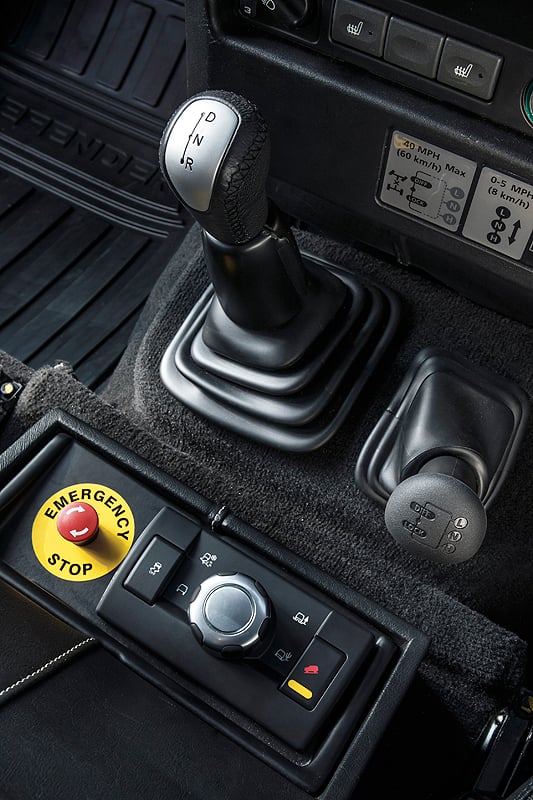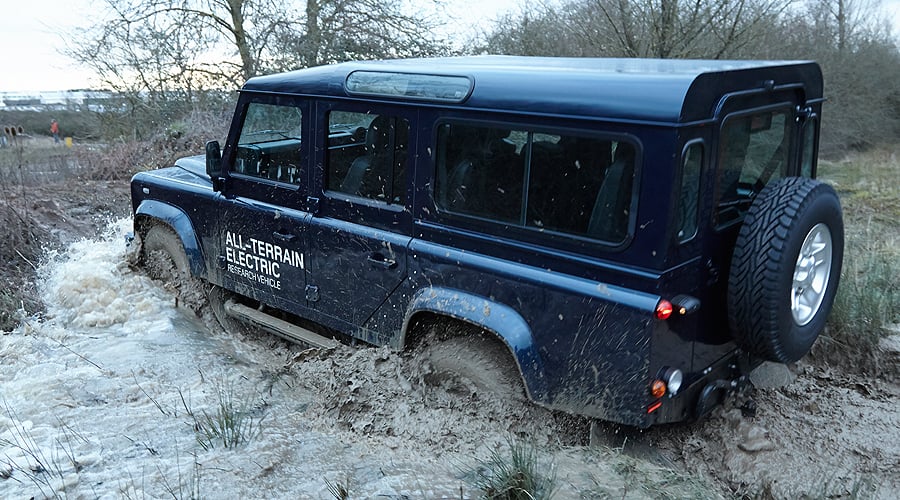The vehicle was a big success ‘in the bush’ and now Land Rover has built a further seven examples, all based on the current Defender 110. A day before the car’s debut at the Geneva Show, Land Rover allowed journalists to take it for a trip around the block – despite the lack of elephants or lions running wild in the Swiss city.
The classic British 4x4 is the perfect test-bed for such technology. No other vehicle is as dedicated to uncompromising use off the beaten track. But here lies the problem: building a ‘shopping car’ electric vehicle is one thing, creating a 4x4 worthy of the ‘Land Rover’ badge is quite something else. The Defender Electric would have to have the marque’s legendary terrain-covering capabilities, while keeping its sophisticated electrics safe and secure through riverbeds and up mountain trails.



Under the bonnet, instead of a lusty diesel there sits a 410kg, 300-volt, lithium-ion battery with a capacity of 27kWh, giving a range of more than 50 miles. “In typical, low-speed, off-road use it can last for up to eight hours before recharging,” says the British company. It powers a 70kW (94bhp), 330Nm electric motor that drives all four wheels via the Defender’s existing four-wheel-drive system.
As electric motors deliver maximum torque from start-up, there is no need for a gearbox. When driving the car it elicits a slight hum. That’s not enough to scare the animals, and neither will the relatively modest maximum speed of 65km/h. But it is capable of that in reverse, too – something that might come in useful when faced with a charging rhino.



A modified version of Land Rover’s Terrain Response System has been incorporated and, via Hill Descent Control, its regenerative braking system can generate 30kW of electricity. Up to 80 per cent of the kinetic energy in the vehicle can be recovered in this way, depending on conditions.
And the Electric Defender has another surprise up its sleeve. Lacking many of the vents and intakes required by a car with a conventional internal combustion engine, the electric Landie can wade through much deeper water (800mm, that’s up from 500mm on the standard car). Without the fuel-fired heater in the cabin requiring an air intake, and with appropriate sealing, it could drive totally underwater.

For now, however, its role is above ground as a rolling test vehicle to assess the potential of electric off-road vehicles with as light an impact on the environment as possible.
Photos: Land Rover










